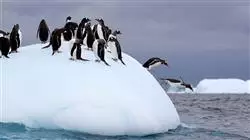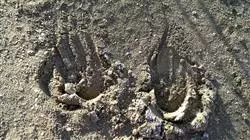University certificate
The world's largest faculty of veterinary medicine”
Introduction to the Program
Do not miss the opportunity to study this Postgraduate certificate in Software Programs for Wildlife Monitoring at TECH. It's the perfect opportunity to stand out and advance your career”

Unlike other training programs, the Postgraduate certificate in Software Programs for Wildlife Monitoring approaches wildlife management from an interdisciplinary point of view.
Wildlife management covers a wide spectrum of lines of research and action, in addition to the study of health surveillance and disease control, which is usually the general line of study in similar programs. However, in the future, veterinary professionals will have to face other lines of work in biodiversity conservation, which are also extensively developed throughout the syllabus.
Nowadays, it is difficult to find a program like this one, which provides students with specialized information in the use of the most common software in daily practice. Today there are many computer tools available that are considered necessary and that facilitate and increase the level of quality of work, which are considered necessary.
Using GIS, it is possible to process and manage territorial data to represent results or interpret information on a large scale. In this way, it is, therefore, possible to plan in advance the lengths of a transect, plan territorial sampling points, analyze species richness and densities, combine environmental variables or model the most appropriate areas to geographically identify locations where a species can be found or reintroduced.
Species biology is not only based on theoretical knowledge, but also on spatial and geolocalized data. The only way to understand and visualize how species are distributed is by using Geographic Information Systems to represent and model the data.
This complete training program is designed by professors with the highest recognized degree of specialization, thus guaranteeing its quality in all aspects in wildlife, both clinical and scientific. A unique opportunity to specialize in an area where professional positions are in high demand, from the hands of outstanding professionals.
Study with TECH and learn the concepts associated with wildlife populations and the processes and interactions that take place”
This Postgraduate certificate in Software Programs for Wildlife Monitoring contains the most complete and up-to-date educational program on the market. The most important features include:
- Case studies presented by experts in Wildlife
- The graphic, schematic, and practical contents with which they are created, provide scientific and practical information on the disciplines that are essential for professional development
- New developments in Wildlife Management
- Practical exercises where the self-assessment process can be carried out to improve learning
- Special emphasis on innovative methodologies in Wildlife Management
- Theoretical lessons, questions to the expert, debate forums on controversial topics, and individual reflection assignments
- Content that is accessible from any fixed or portable device with an Internet connection
This Postgraduate certificate is the best investment you can make when selecting a refresher program in Software Programs for Wildlife Monitoring”
It includes, in its Teaching staff, Professionals belonging to the veterinary field, who pour into this training the experience of their work, in addition to recognized Specialists from Reference Societies and Prestigious Universities.
The multimedia content, developed with the latest educational technology, will provide the professional with situated and contextual learning, i.e., a simulated environment that will provide immersive specialization programmed to learn in real situations.
This program is designed around Problem-Based Learning, whereby the specialist must try to solve the different professional practice situations that arise throughout the program. For this, the professional will have the help of an innovative, interactive video system made by recognized and experienced experts in Wildlife.
This program comes with the best educational material, providing you with a contextual approach that will facilitate your learning"

This 100% online Postgraduate certificate will allow you to combine your studies with your professional work while increasing your knowledge in this field"
Why study at TECH?
TECH is the world’s largest online university. With an impressive catalog of more than 14,000 university programs available in 11 languages, it is positioned as a leader in employability, with a 99% job placement rate. In addition, it relies on an enormous faculty of more than 6,000 professors of the highest international renown.

Study at the world's largest online university and guarantee your professional success. The future starts at TECH”
The world’s best online university according to FORBES
The prestigious Forbes magazine, specialized in business and finance, has highlighted TECH as “the world's best online university” This is what they have recently stated in an article in their digital edition in which they echo the success story of this institution, “thanks to the academic offer it provides, the selection of its teaching staff, and an innovative learning method aimed at educating the professionals of the future”
A revolutionary study method, a cutting-edge faculty and a practical focus: the key to TECH's success.
The most complete study plans on the university scene
TECH offers the most complete study plans on the university scene, with syllabuses that cover fundamental concepts and, at the same time, the main scientific advances in their specific scientific areas. In addition, these programs are continuously being updated to guarantee students the academic vanguard and the most in-demand professional skills. In this way, the university's qualifications provide its graduates with a significant advantage to propel their careers to success.
TECH offers the most comprehensive and intensive study plans on the current university scene.
A world-class teaching staff
TECH's teaching staff is made up of more than 6,000 professors with the highest international recognition. Professors, researchers and top executives of multinational companies, including Isaiah Covington, performance coach of the Boston Celtics; Magda Romanska, principal investigator at Harvard MetaLAB; Ignacio Wistumba, chairman of the department of translational molecular pathology at MD Anderson Cancer Center; and D.W. Pine, creative director of TIME magazine, among others.
Internationally renowned experts, specialized in different branches of Health, Technology, Communication and Business, form part of the TECH faculty.
A unique learning method
TECH is the first university to use Relearning in all its programs. It is the best online learning methodology, accredited with international teaching quality certifications, provided by prestigious educational agencies. In addition, this disruptive educational model is complemented with the “Case Method”, thereby setting up a unique online teaching strategy. Innovative teaching resources are also implemented, including detailed videos, infographics and interactive summaries.
TECH combines Relearning and the Case Method in all its university programs to guarantee excellent theoretical and practical learning, studying whenever and wherever you want.
The world's largest online university
TECH is the world’s largest online university. We are the largest educational institution, with the best and widest online educational catalog, one hundred percent online and covering the vast majority of areas of knowledge. We offer a large selection of our own degrees and accredited online undergraduate and postgraduate degrees. In total, more than 14,000 university degrees, in eleven different languages, make us the largest educational largest in the world.
TECH has the world's most extensive catalog of academic and official programs, available in more than 11 languages.
Google Premier Partner
The American technology giant has awarded TECH the Google Google Premier Partner badge. This award, which is only available to 3% of the world's companies, highlights the efficient, flexible and tailored experience that this university provides to students. The recognition as a Google Premier Partner not only accredits the maximum rigor, performance and investment in TECH's digital infrastructures, but also places this university as one of the world's leading technology companies.
Google has positioned TECH in the top 3% of the world's most important technology companies by awarding it its Google Premier Partner badge.
The official online university of the NBA
TECH is the official online university of the NBA. Thanks to our agreement with the biggest league in basketball, we offer our students exclusive university programs, as well as a wide variety of educational resources focused on the business of the league and other areas of the sports industry. Each program is made up of a uniquely designed syllabus and features exceptional guest hosts: professionals with a distinguished sports background who will offer their expertise on the most relevant topics.
TECH has been selected by the NBA, the world's top basketball league, as its official online university.
The top-rated university by its students
Students have positioned TECH as the world's top-rated university on the main review websites, with a highest rating of 4.9 out of 5, obtained from more than 1,000 reviews. These results consolidate TECH as the benchmark university institution at an international level, reflecting the excellence and positive impact of its educational model.” reflecting the excellence and positive impact of its educational model.”
TECH is the world’s top-rated university by its students.
Leaders in employability
TECH has managed to become the leading university in employability. 99% of its students obtain jobs in the academic field they have studied, within one year of completing any of the university's programs. A similar number achieve immediate career enhancement. All this thanks to a study methodology that bases its effectiveness on the acquisition of practical skills, which are absolutely necessary for professional development.
99% of TECH graduates find a job within a year of completing their studies.
Postgraduate Certificate in Computer Programs for Wildlife Monitoring.
If you are passionate about wildlife conservation and want to acquire technological skills for tracking and monitoring species, our Postgraduate Certificate in Computer Programs for Wildlife Tracking at TECH Global University is the perfect option for you. Here we offer you the opportunity to develop your skills in the use of specialized programs for wildlife tracking. Through our online classes, you will have a complete academic program and you will be guided by professional experts in the field of conservation and technology. Our online classes will give you the flexibility to access the program from anywhere and at any time that fits your schedule. You will be able to interact with other professionals in the conservation field, share experiences and knowledge, and receive personalized guidance from our specialized instructors.
Learn how to use wildlife monitoring programs.
Over a period of 1 to 3 months, you will explore the latest tools and techniques used in wildlife monitoring. You will learn to use specific programs that will allow you to collect, analyze and visualize data related to biodiversity and species behavior. At the end of the Postgraduate Certificate, you will receive an internationally recognized certificate of completion, which will endorse your skills in the use of wildlife monitoring software. This certificate will be tangible proof of your dedication to biodiversity conservation and will open doors to career opportunities in the field of ecology and environmental management. Don't miss this opportunity to become an expert in wildlife tracking software - enroll today and contribute to biodiversity conservation!







